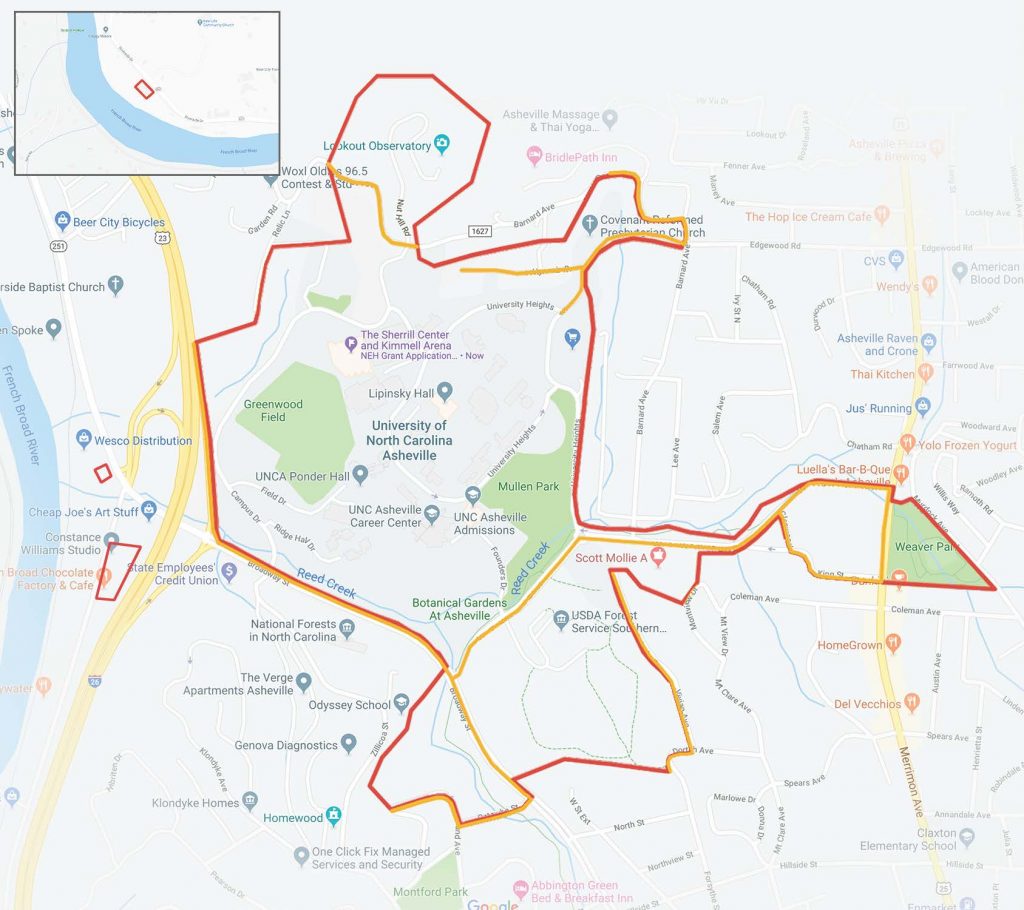For purposes of reporting Clery statistics, the university must distinguish criminal offenses based on where they occur. Statistics are separated into geographic categories including: On-Campus, Non-Campus, and Public Property.
Main Campus Clery Map
The campus boundaries are determined based on definitions provided in the section below concerning public property boundaries and use of facilities by students. (The red lines indicate On-Campus Property.) Click the map below to view a larger version.

Geography Categories and Definitions
On-Campus
- Any building or property owned or controlled by an institution within the core campus (same reasonably contiguous geographic area) and used by the institution in direct support of, or in a manner related to, the institution’s educational purposes, including residence halls; and
- Any building or property that is within or reasonably contiguous to the area identified:
- That is owned by the institution but controlled by another person
- Is frequently used by students
- Supports institutional purposes (such as food or retail vendor).
Examples: University buildings (e.g. Highsmith Union, Rhoades-Robinson), university residence halls, university owned land/property (e.g. Quad, Mullen Park, Greenway), university streets, sidewalks, parking lots (e.g., University Heights, P16, P4).
On-Campus: Residence Halls
Statistics are also required to be split into a sub-category to specify which on-campus crimes occurred in Residence Halls.
Non-Campus
- Any building or property owned or controlled by a student organization that is officially recognized by the institution; or
- Any building or property owned or controlled by an institution that is used in direct support of, or in relation to, the institution’s educational purposes, is frequently used by students, and is not within the same reasonably contiguous geographic area of the institution.
Examples: University owned or leased buildings outside the core campus, or off-campus greek-life housing.
Public Property
All public property, including thoroughfares, streets, sidewalks, and parking facilities, that is within the core campus, or immediately adjacent to and accessible from the core campus. This also extends into public parks immediately adjacent to and accessible from campus.
Examples: City streets (e.g. W.T. Weaver Blvd, Broadway St), Public Parks (e.g., Glenn’s Creek Greenway and Weaver Park), and sidewalks adjacent to public roadways.

